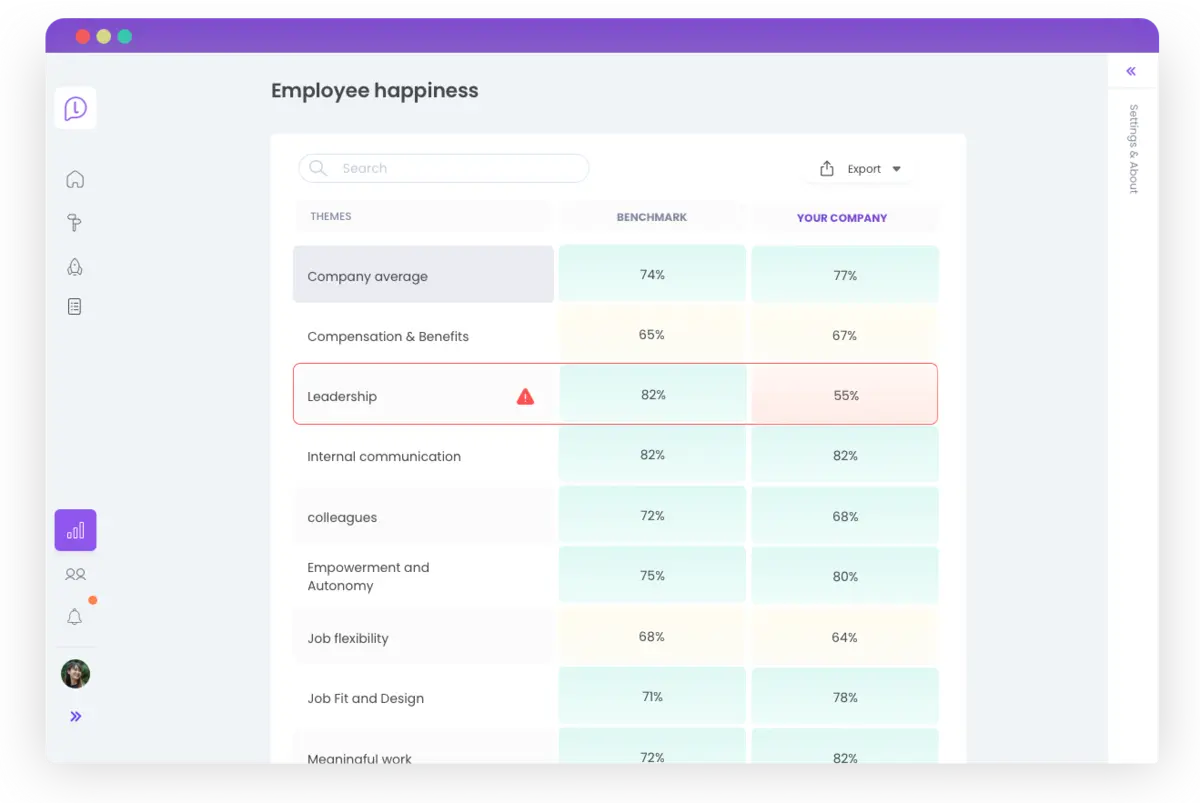Discover the power of the eNPS (Employee Net Promoter Score), a measurement tool that captures employee engagement and loyalty in your organization. Inspired by the Net Promoter Score from the marketing world, the eNPS focuses specifically on employees’ willingness to recommend your company as an employer. In this blog, you’ll discover why eNPS is critical, how to measure it and the benefits it offers for improving your organization’s work environment and performance.
What is the eNPS and why is it important?
The eNPS is a measurement tool used to measure employee engagement and loyalty. It is based on the Net Promoter Score (NPS), a well-known method in the marketing world used to measure customer loyalty. The eNPS focuses specifically on employee engagement and their willingness to recommend the company as an employer to others.
The idea behind the eNPS is that employees who actively recommend the company are likely to be more engaged, satisfied and loyal. In contrast, employees who would not recommend the company may indicate that there may be problems with engagement and employee experience.
For companies, the eNPS is useful because it provides a simple and quick way to measure employee engagement and identify potential areas for improvement. A high eNPS indicates a positive work culture, while a low eNPS may indicate problems such as dissatisfaction, lack of engagement or communication problems.
How do you calculate the eNPS?
Calculating eNPS begins by asking employees one key question, “On a scale of 0 to 10, to what extent would you recommend our company as an employer to friends or family?” Based on the answer, workers are placed in three categories:
-
- Promoters (score 9-10): These are the enthusiastic employees who would actively recommend the company.
- Passives (score 7-8): These are satisfied employees, but they are not as engaged as the Promoters.
- Detractors (score 0-6): These are employees who are dissatisfied and would not recommend the company.
The eNPS is calculated by subtracting the percentage of Detractors from the percentage of Promoters. Thus, the result is between -100 and +100.
Calculation example of the eNPS:
Suppose you conducted an employee satisfaction survey and asked all employees the question, “On a scale of 0 to 10, to what extent would you recommend our company as an employer to friends or family?” Below is a fictitious result of the answers:
-
- Promoters (score 9-10): 75 employees
- Passives (score 7-8): 50 employees
- Detractors (score 0-6): 25 employees
To calculate eNPS, follow the formula: eNPS = Percentage of Promoters – Percentage of Detractors. Let’s do the math:
Calculate the percentage for each category:
Percentage of Promoters: (Number of Promoters / Total Respondents) * 100
In this case: (75 / 150) * 100 = 50%
Percent Detractors: (Number of Detractors / Total Respondents) * 100
In this case: (25 / 150) * 100 = 16.67%
Subtract the percentage of Detractors from the percentage of Promoters:
eNPS = Percentage of Promoters – Percentage of Detractors
= 50% – 16.67%
= 33.33%
So in this example, the eNPS would be 33.33.
The scale runs from -100 to +100. The higher the eNPS result, the more positive employee engagement and loyalty. In our example, we have a positive eNPS of 33.33, indicating a good level of employee engagement and satisfaction, but there is also room for improvement.

With Learned, you can measure employee satisfaction on several components. That way, you know what results need to be acted on by comparing scores with similar organizations. With the Learned Engagement Model, all results are benchmarked against similar organizations.
How do you interpret the results?
The interpretation depends on the context and industry in which the company operates. In general, an eNPS of +50 or higher can be considered excellent, while a score of -10 or lower indicates significant problems within the organization. A positive eNPS indicates higher employee engagement and satisfaction, which can lead to improved performance and reduced employee turnover.
What can you do to improve results?
You can take several actions to increase eNPS and improve employee engagement. An effective approach is to conduct additional employee happiness surveys (Employee happiness surveys) or pulse surveys. A pulse survey is a short and frequent survey specifically designed to measure employee engagement and satisfaction. It provides valuable insights into the current state of affairs and enables an HR team to take targeted actions. Here are some tips:
1. Communicate the results
Be sure to communicate the results of the survey to employees. Transparency in the process shows that their feedback is taken seriously and increases involvement in the improvement process.
2. Involve employees in creating action plans
Organize meetings or workshops to engage with employees about results and possible improvements. This increases engagement and gives employees a voice in the process. In this way, together you can create action plans that address the needs and concerns of the employees.
3. Improve work culture
Create a positive and supportive work environment where employees feel valued and heard. One way you can achieve this is by encouraging open communication, recognizing and rewarding performance, and providing opportunities for professional growth and development.
4. Support employee well-being
Provide programs and initiatives that promote employee well-being, such as flexible working hours, health and wellness programs, and work-life balance. Employee well-being has a direct impact on their engagement and satisfaction.
5. Hold regular follow-up surveys
Conduct regular pulse surveys to measure progress and evaluate whether the actions taken have been effective. This allows you to make adjustments and identify new areas for improvement. By conducting additional Employee happiness surveys or pulse surveys, and taking targeted actions based on the results, you can increase eNPS and improve employee engagement.
With Learned, you easily measure and improve eNPS:
Learned is a tool that helps companies measure and improve eNPS. Learned lets you create and send surveys to employees, including the eNPS question and additional questions to understand the reasons behind the scores. The tool also offers advanced analysis capabilities and reports to interpret the results and formulate improvement actions. Try Learned now for free for 14 days and experience for yourself the ease of measuring and improving your eNPS.




























